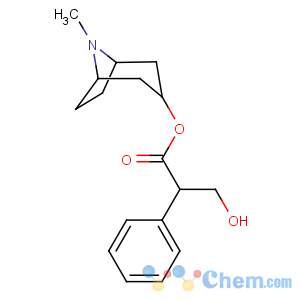Title: Carrageenan
CAS Registry Number: 9000-07-1
Synonyms: Carrageen; carrageenin
Literature References: Mixture of sulfated polysaccharides extracted from red seaweed
(Rhodophyceae). Chief sources are
Chondrus crispus (L.) Stackhouse, and
Gigartina stellata (G. mammillosa) (Goodenough and Woodward) J. Aghardh,
Gigartinaceae, found most abundantly in North Atlantic coastal regions from Norway to North Africa. The name carrageenan is derived from the Irish coastal town of Carragheen. The k and l structural families are identified based on position of sulfate and the presence/absence of anhydrogalactose. Kappa (k) family consists of k,i,m,n carrageenans of which k and i are the most prevalent. Characterized by a repeating unit of 4-sulfate-b-D-galactopyranosyl(1?4)-a-D-galactose linked (1?3). The galactose unit varies: 3,6-anhydro-a-D-galactose for k-form; 3,6-anhydro-a-D-galactose-2-sulfate for i-form. Due to helical tertiary structure which allows for gelling, k-family is of major commercial importance. Lambda (l) family consists of l and x; characterized by a repeating (1?3) linked disaccharide of 2-sulfate-b-D-galactopyranosyl(1?4)-a-D-galactose. The galactose residue is 2,6-sulfated for l form and 2-sulfated for x form. These carrageenans are non-gelling. Conformational study: N. S. Anderson
et al., J. Mol. Biol. 45, 85 (1969); and structural analysis: D. A. Rees, E. J. Welsh,
Angew. Chem. Int. Ed. 16, 214 (1977); C. Bodeau-Bellion,
Physiol. Veg. 21, 785 (1983). Use as phlogistic agent: C. A. Winter
et al., Proc. Soc. Exp. Biol. Med. 111, 544 (1962); L. Levy,
Life Sci. 8, 601 (1969). IR determn of k, i, and l forms: E. Tojo, J. Prado,
Carbohydr. Res. 338, 1309 (2003). Review of effect on inflammation and immunity: H. J. Schwartz in
Inadvert. Modif. Immune Resp. FDA-80-1074, 109-114 (1980); S. Nicklin, K. Miller,
Food Addit. Contam. 6, 425-436 (1989). Review of toxicology: M. L. Weiner,
Agents Actions 32, 46-51 (1991). Review of industrial and non-food uses: R. J. Tye,
Carbohydr. Polym. 10, 259-280 (1989).
General Reviews: G. H. Therkelsen in
Industrial Gums, R. L. Whistler, J. N. BeMiller, Eds. (Academic Press, New York, 3rd ed., 1993) pp 145-180; J. K. Baird, "Gums" in
Kirk-Othmer Encyclopedia of Chemical Technology vol. 12 (Wiley-Interscience, New York, 4th ed., 1994) pp 842-862.
Derivative Type: k-Form
Properties: Ability to form thermoreversible gels. Gelation depends on temperature, concentration of counterions and other polysaccharides. Sol in very polar solvents. Sol in hot milk, hot conc. sugar soln; above 60° in water, as Na+ salt in cold water. K+ and Ca2+ salts are insol in cold water. Insol in in conc. salt soln; 35% alcohol soln; insol with swelling in cold milk. Optimum stablility occurs in pH 9. Degree of sulphation varys from 25-30%.
Derivative Type: i-Form
Properties: Ability to form thermoreversible gels. Gelation depends on temperature, concentration of counterions and other polysaccharides. Sol in very polar solvents. Sol in hot milk, hot conc. salt soln; above 60° in water, as Na+ salt in cold water; slightly sol hot conc. sugar soln. K+ and Ca2+ salts are insol in cold water. Insol in 35% alcohol soln; insol in cold milk. Optimum stablility occurs in pH 9. Degree of sulfation varies from 28-35%. LD50 orally in rat: >5000 mg/kg; dermally in rabbit: >2000 mg/kg (Weiner). LC50 (4 hr) in rat: >930.8 ±74.4 mg/m3 (Weiner).
Toxicity data: LD50 orally in rat: >5000 mg/kg; dermally in rabbit: >2000 mg/kg (Weiner); LC50 (4 hr) in rat: >930.8 ±74.4 mg/m3 (Weiner)
Derivative Type: l-Form
Properties: Sol in very polar solvents. Sol in water, milk, hot conc. sugar soln, conc. salt soln., as Na+salt in 35% alcohol soln. Optimum stablility occurs in pH 9. The most highly sulfated from 32-39%.
Use: Gelling, emulsifying, and stabilizing agent and viscosity builder in foods and non-foods, but esp in milk or water systems. Demulcent. To induce experimental edema in laboratory animals.

